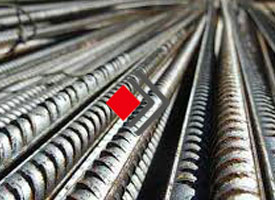
Classification of rebar steel

Classification factors of rebars in every country, steel products are produced and sent to the market based on the standards developed in accordance with the weather and climate conditions of the regions. These standards directly affect the chemical and mechanical properties of products. In Iran, the procedure is the same and basically the rebars with […]
Classification factors of rebars in every country, steel products are produced and sent to the market based on the standards developed in accordance with the weather and climate conditions of the regions. These standards directly affect the chemical and mechanical properties of products. In Iran, the procedure is the same and basically the rebars with […]
Rebar classification factors
In every country, steel products are produced and sent to the market based on the developed standards according to the weather conditions of the regions. These standards directly affect the chemical and mechanical properties of products. In Iran, the procedure is the same, and basically the rebars reach the production stage by complying with the Russian GOST standard. One of the main Iranian producers and pioneers is the Isfahan Iron Smelting Factory, which has been able to overtake other domestic producers and take a share in the world markets.
Basically, rebar classification is based on the following factors:
Production standard
The diameter of the steel product
Appearance and tread
Application
Classification of rebar according to the Russian standard is in the following three ways:
In the first series called grade A1 in smooth form
The second category, called grade A2, is spiral ribbed
The third category is called grade A3 and is ribbed
Types of rebar in terms of resistance
If we want to compare the classification of rebars based on their mechanical characteristics and resistance, we can say that the yield and tensile strength of the first type is 2400 and 3600, the yield strength and tensile strength of the second type is 3400 and 500, and finally the strength and tensile strength of the type The third is 4000 and 6000 thousand respectively.
The mentioned scales are all based on kilograms per square centimeter. Other categories of rebars are based on their diameter because each product is produced in different sizes and each one is considered for a specific application. The diameter of the rebars produced in the domestic market of Iran is 40 mm. For welding and connections of this category of steel products, butt welding or forging is used. In this method, the applied pressure is combined with the heat of oxygen gas.
Be sure to read: The difference between UPVC profiles
Types of rebar in terms of shape
Other classification of rebars is based on their appearance and tread, which are again divided into simple and ribbed. Basically, simple and non-treaded rebars are used as thermal products or in industrial applications. Ribbed products are mainly seen in construction and civil engineering.
The relative deformation in simple rebar without tread is very high compared to the other two types and is estimated to be about 25%. Based on the tests, it can be said that this product is very soft and flexible, because the percentage of carbon used in its chemical composition is very low, and therefore bending and unbending operations on it are unobstructed, so it can be used for Industrial uses, blacksmithing and things that need to change the shape benefit from it, another name of this ductile grade.
The second category spirally with 19% deformation shows that the product is semi-crisp and almost fragile, therefore bending and unbending operations on it are limited and even better than deformation at sharp angles and or welding on it should be avoided.
The third type, ribbed, is widely seen in the market of steel products. The percentage of deformation in this group is much lower than the previous two groups and is about 14%. This clearly shows that this grade is very brittle. After changing the shape or welding and forging on it, it should be avoided.
Be sure to read: What is coiled rebar?
The classification of rebars with other names is popular, for example, simple rebars are known as 240, grade 2 ribbed rebars are known as 340, grade 3 ribbed rebars are known as 400, and composite rebars are known as compound. Now the question is, how can we easily distinguish the mentioned steel sections from each other? It is very easy to identify the relevant grade by checking the appearance and the treads stretched all around the branch of the product.
Types of application of rebars
Other categories of rebars are based on the type of their application, generally based on this, we can say that rebars are divided into six groups:
Straight rebar that is installed with the purpose of increasing the strength of concrete.
Khamut rebars, which are a kind of transverse reinforcement.
Pin bars are placed next to the dampers.
Vaults that are embedded in horizontal grids in the form.
U-shaped stirrups
Edka to bear negative charges
